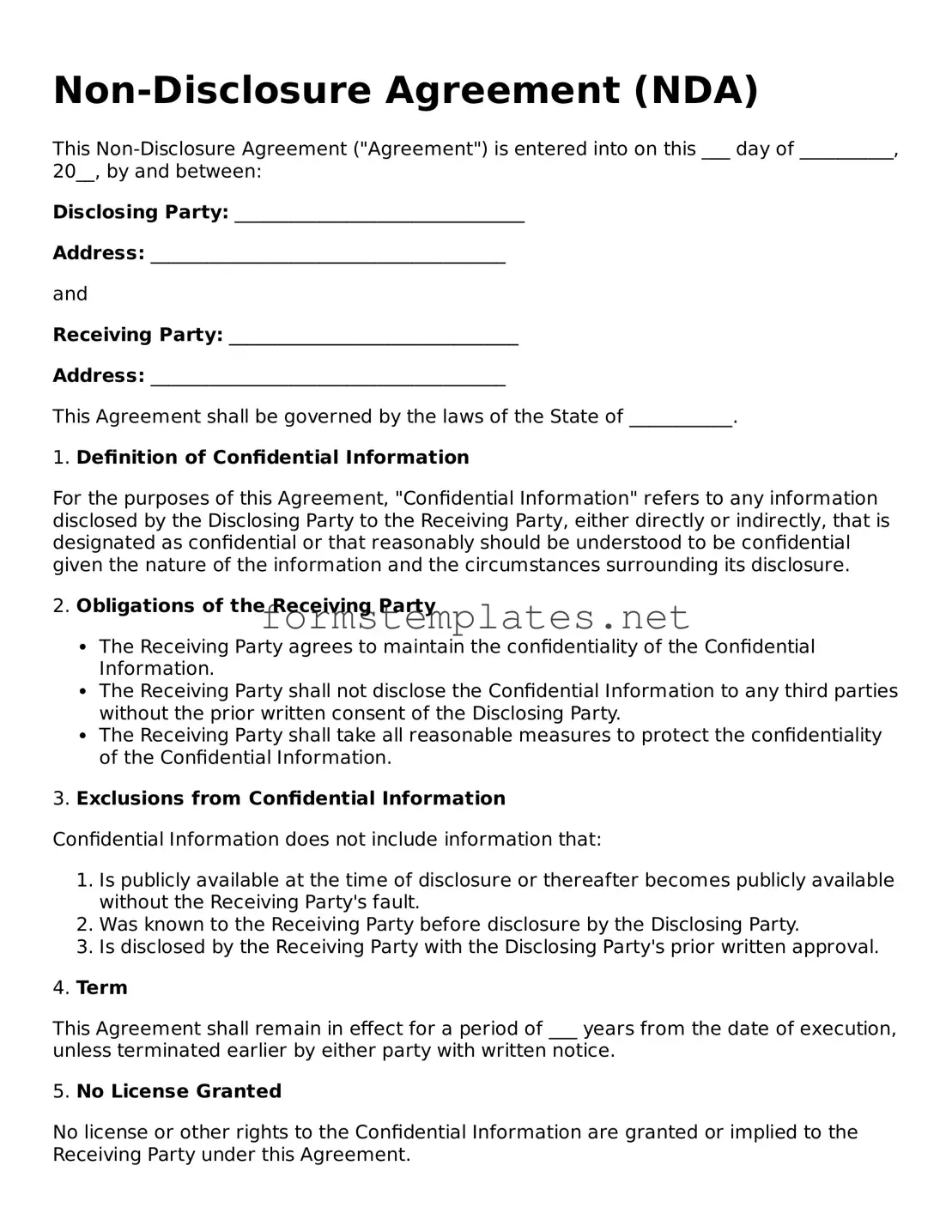Non-Disclosure Agreement (NDA)
This Non-Disclosure Agreement ("Agreement") is entered into on this ___ day of __________, 20__, by and between:
Disclosing Party: _______________________________
Address: ______________________________________
and
Receiving Party: _______________________________
Address: ______________________________________
This Agreement shall be governed by the laws of the State of ___________.
1. Definition of Confidential Information
For the purposes of this Agreement, "Confidential Information" refers to any information disclosed by the Disclosing Party to the Receiving Party, either directly or indirectly, that is designated as confidential or that reasonably should be understood to be confidential given the nature of the information and the circumstances surrounding its disclosure.
2. Obligations of the Receiving Party
- The Receiving Party agrees to maintain the confidentiality of the Confidential Information.
- The Receiving Party shall not disclose the Confidential Information to any third parties without the prior written consent of the Disclosing Party.
- The Receiving Party shall take all reasonable measures to protect the confidentiality of the Confidential Information.
3. Exclusions from Confidential Information
Confidential Information does not include information that:
- Is publicly available at the time of disclosure or thereafter becomes publicly available without the Receiving Party's fault.
- Was known to the Receiving Party before disclosure by the Disclosing Party.
- Is disclosed by the Receiving Party with the Disclosing Party's prior written approval.
4. Term
This Agreement shall remain in effect for a period of ___ years from the date of execution, unless terminated earlier by either party with written notice.
5. No License Granted
No license or other rights to the Confidential Information are granted or implied to the Receiving Party under this Agreement.
6. Governing Law
This Agreement shall be governed by and construed in accordance with the laws of the State of ____________.
IN WITNESS WHEREOF, the parties hereto have executed this Non-Disclosure Agreement as of the date first above written.
Disclosing Party Signature: ___________________________
Date: ______________________________________________
Receiving Party Signature: ___________________________
Date: ______________________________________________
